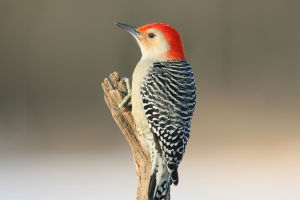Rabbits, belonging to the family Leporidae, are small mammals known for their long ears, powerful hind legs, and gentle demeanor.
With over 30 species found worldwide, these creatures are not only popular as pets but also play a significant role in various ecosystems.
Physical Characteristics
Rabbits have distinct features that set them apart from other animals. Their long ears, which can reach up to 4 inches in length, are not just for show; they serve a critical purpose in regulating body temperature and detecting predators. Their powerful hind legs allow them to make impressive jumps—some species can leap over 10 feet in a single bound. The fur of a rabbit varies significantly depending on the species, ranging from the classic brown or gray to more vibrant colors like white or black. This fur helps them blend into their surroundings, providing essential camouflage from predators.
Habitat and Distribution
Rabbits are adaptable creatures found in a variety of habitats, including forests, grasslands, and wetlands. They are most commonly associated with meadows and fields where they can dig burrows to create complex underground homes called warrens.This structure not only protects them from predators but also provides a comfortable environment to raise their young. In the wild, rabbits are social animals, often living in groups, which aids in their survival.
Diet and Feeding Habits
Rabbits are herbivores, primarily feeding on grass, hay, and various leafy greens. Their digestive system is specially adapted to process fibrous plant material. They have a unique way of digesting food: rabbits produce two types of feces—hard pellets and soft droppings. The soft droppings are rich in nutrients and are re-ingested, allowing the rabbit to absorb as much nourishment as possible.
Behavior and Communication
Rabbits are renowned for being inquisitive and lively. They communicate through a variety of sounds, including whines, growls, and purrs, as well as through body language. Thumping their hind legs is a common signal of danger to alert other rabbits in the vicinity. When feeling comfortable and happy, rabbits often exhibit behaviors such as binkying—jumping, and twisting in the air, which is a sign of pure joy.
Breeding and Lifespan
Rabbits can have many litters annually, making them prolific breeders. A female rabbit, known as a doe, can give birth to anywhere from one to twelve kits (baby rabbits) in a single litter depending on the species. Kits are born blind and hairless, but they grow rapidly and are weaned in just a few weeks. In captivity, rabbits can live up to 10 years, while their wild counterparts typically have shorter lifespans due to predation and environmental factors.
Conservation Status
While many rabbit species are common and widespread, some are threatened due to habitat loss, hunting, and predation by domestic animals. Conservation efforts are in place in various regions to protect endangered rabbit species and their habitats ensuring that these charming creatures continue to thrive in the wild.
Rabbits are more than just cute, fluffy animals; they play a vital role in the ecosystem and bring joy to countless households as beloved pets. Understanding their behavior, diet, and needs is essential for their care, whether in the wild or as domesticated companions. So, Lykkers, by appreciating these fascinating creatures, we can better advocate for their conservation and ensure their continued presence in our world.
Facts about Bunnies
Video by Homeschool Pop


